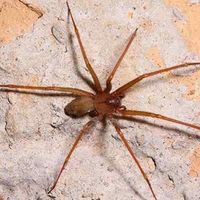Mini pebble vs pebble tec
Mini pebble vs pebble tec. When it comes to choosing a pool finish, there are many options available, each with their own unique set of benefits and drawbacks. Two popular choices for pool finishes are mini pebble and pebble tec. But what is the difference between these two finishes, and which one is the best choice for your pool?
In this article, we will compare mini pebble and pebble tec, including their appearance, durability, maintenance requirements, and cost. By the end, you should have a better understanding of which pool finish is the best fit for your needs.
Mini pebble vs pebble tec
Appearance:
One of the main differences between mini pebble and pebble tec is their appearance. Mini pebble is a type of pool finish that consists of small, smooth pebbles that are mixed with a polymer-based binder and applied to the surface of the pool. The result is a finish that has a smooth, polished appearance and a variety of color options to choose from.
Pebble tec, on the other hand, is a type of pool finish that consists of larger, more irregularly shaped pebbles that are mixed with a cement-based binder and applied to the surface of the pool. The result is a finish that has a more natural, rugged appearance, with a variety of color options to choose from.
Durability:
When it comes to durability, both mini pebble and pebble tec are known for their long-lasting properties. Mini pebble finishes are made with a polymer-based binder, which is known for its strength and durability. In addition, the smooth, polished appearance of mini pebble finishes helps to prevent dirt and debris from getting trapped in the surface, which can lead to staining and other damage.
Pebble tec finishes, on the other hand, are made with a cement-based binder, which is also known for its strength and durability. The larger, more irregularly shaped pebbles of a pebble tec finish can help to hide small imperfections and chips, which can occur over time with regular use. However, the rough, natural appearance of pebble tec finishes can make it more difficult to remove dirt and debris, which can lead to staining and other damage.
Maintenance Requirements:
Both mini pebble and pebble tec finishes require regular maintenance to keep them looking their best. Mini pebble finishes should be brushed and vacuumed regularly to remove dirt and debris, and the pH level of the pool water should be kept within the recommended range to prevent staining and other damage. In addition, mini pebble finishes should be sealed every two to three years to help protect against staining and other damage.
Pebble tec finishes also require regular brushing and vacuuming to remove dirt and debris, and the pH level of the pool water should be kept within the recommended range to prevent staining and other damage. In addition, pebble tec finishes should be acid washed every three to five years to help remove any built-up dirt and debris, and to restore the natural appearance of the finish.
Cost:
When it comes to cost, mini pebble and pebble tec finishes can vary significantly. Mini pebble finishes tend to be more expensive upfront, due to the cost of the materials and the labor required for installation. However, mini pebble finishes are known for their long-lasting properties, which can help to offset the initial cost over time.
Pebble tec finishes, on the other hand, tend to be less expensive upfront, due to the lower cost of the materials and the labor required for installation. However, pebble tec finishes may require more frequent maintenance, such as acid washing, which can add to the overall cost of ownership.
In addition to the initial cost of the finish, it’s important to consider the long-term maintenance costs of each option. Mini pebble finishes may require less frequent maintenance, such as sealing, which can help to keep the overall cost of ownership lower. Pebble tec finishes may require more frequent maintenance, such as acid washing, which can add to the overall cost of ownership.
Conclusion:
When it comes to choosing a pool finish, mini pebble and pebble tec are both popular options with their own unique sets of benefits and drawbacks. Mini pebble finishes have a smooth, polished appearance and are known for their durability, but may be more expensive upfront and require more frequent maintenance, such as sealing. Pebble tec finishes have a natural, rugged appearance and are also known for their durability, but may be less expensive upfront and require more frequent maintenance, such as acid washing.
Ultimately, the best choice for your pool will depend on your personal preferences, budget, and maintenance preferences. By considering the appearance, durability, maintenance requirements, and cost of both options, you can make an informed decision that is the best fit for your needs.
FAQs
Can mini pebble finishes be used on inground and above ground pools?
Yes, mini pebble finishes can be used on both inground and above ground pools. However, it’s important to keep in mind that the installation process and materials required may vary depending on the type of pool.
How often should mini pebble finishes be sealed?
The frequency of sealing needed for a mini pebble finish will depend on a variety of factors, such as the type of sealer used, the pool’s location, and the amount of use the pool receives. In general, mini pebble finishes should be sealed every 1-3 years to help protect the finish and maintain its appearance.
Is it possible to change the finish on an existing pool from mini pebble to pebble tec, or vice versa?
Yes, it is possible to change the finish on an existing pool from mini pebble to pebble tec, or vice versa. However, this process can be labor-intensive and costly, as it involves removing the existing finish and installing the new one. It’s important to carefully consider the benefits and drawbacks of each finish and determine if the cost and effort of changing the finish is worth it. It may also be a good idea to consult with a professional pool builder or contractor to discuss the feasibility and cost of changing the finish on your specific pool.





